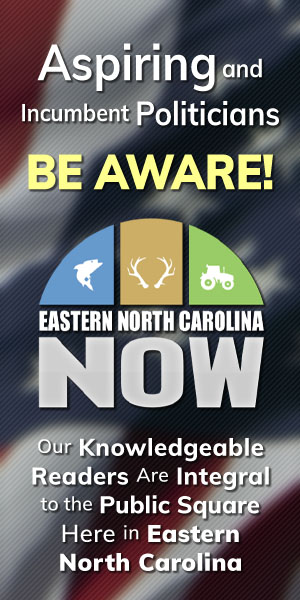Publisher's note: The John William Pope Center for Education Policy provides a treasure trove of information suggesting the better path forward in regards to North Carolina's number one issue — public education. Public education, at all levels, requires a significant amount of funding from our state government, and all one hundred North Carolina counties, so it is essential that leaders effecting education policy get it right, and know that concerned entities, like the John William Pope Center, will be minding their progress to do so. We welcome the John William Pope Center for Education Policy to our growing readership, and expect our readers to learn all they can to do their part in this wise endeavor to better educate our People.
The author of this post is Kelly Markson.
I am a community college failure. Or perhaps I should say, I helped fail one community college.
Decades ago, after receiving my bachelor's degree, I enrolled in a few community college math and statistics classes to prepare for graduate school. Had I not taken those classes, I doubt that I would have finished my graduate degree.
I did not earn from that community college a degree and never intended to. But according to the current thinking, that college failed me. Something is wrong here.
The mainstream media's mantra about community colleges is that their performance should be evaluated based on degree completion statistics, just as it is for traditional four-year colleges and universities. Here are a couple of examples:
- "...community colleges face questions about low retention rates (only one-in-five full-time students complete their two-year degree within three years of entering, according to the National Center for Education Statistics)" Wall Street Journal, "Should Community Colleges Be Tuition-Free?" September 15, 2015.
- "Nationally, about 60 percent of students entering community colleges need remedial courses, and only about 15 percent of them earn an associate's degree or certificate within three years." New York Times, "Community Colleges That Work," Feb. 27, 2015
Only 15 percent of students entering earn degrees! That sounds horrible.
But what about the students like me who never intended to earn a degree? The cited statistics on completion are not very meaningful if they fail to consider the intentions of the institution's students.
At Wake Tech, where I teach, about a quarter of our first-time-in-college full-time students (FTICFT) transfer to other four-year schools without obtaining a diploma or certificate from the community college in three years. Consider the student who did not get into any of the colleges she applied to. Rather than delaying her education, she attends the community college for a year and transfers.
Or what about the student who partied a little too much at a four-year university? He enrolls in the community college for a year and gets his act together before transferring back or to another school. Those students probably benefited from their work here, but because they did not graduate, they drag down our statistics.
Another metric that reflects on the educational value of a school (especially a community college) is its students' rate of passage on various licensing exams. At Wake Tech, that is 92 percent.
When community colleges help students achieve their goals, this should be considered a success whether the students get a degree or not.
Another mistaken idea we hear is that community colleges have low completion rates because their brighter students are "undermatched." In this
Education Next article, for example, Andrew Kelly states,
"The growing literature on undermatch suggests that enrolling in a college that is less selective than they are academically qualified to attend reduces students' chances of graduating."
In other words, better-prepared students who could have been admitted to a four-year college are hurting themselves if they settle for a community college.
The evidence at Wake Tech does not support that idea. Of our FTICFT students, only 43.2 percent are college ready, while 56.8 percent need developmental classes. The under-matched theory suggests that the college-ready group (who have supposedly undermatched by enrolling at Wake Tech) should have graduation rates as low as the less prepared students. In reality, our college-ready group has a graduation rate twice that of the developmental group.
But the graduation rates are very low. Only 15.2 percent of the developmental group graduate, and 30.7 percent of the college-ready group graduate. Once you include the students who transfer before earning a degree, however, the numbers increase to 36.1 and 55.4 for the two groups respectively.
Furthermore, some of our students who have earned a degree/certificate never apply for graduation. If those students are included, the numbers rise even further to a more respectable 42 percent (developmental), 62 percent (college ready) for an overall rate of 51 percent.
What we should conclude, I believe, is that although many of the students who enroll at Wake Tech (and other community colleges) are simply not ready for college, those who are and want to do the necessary work, benefit.
An additional challenge is that many community college students are low income. At Wake Tech, 48.4 percent of the students are on financial aid. A negative life event is more likely to derail a low-income student, who may have to drop out to work full time. That also makes community college statistics look poorer, but it does not mean that either the student or the school has "failed."
Further, more than a third of community college students work more than half time while attending. A significant number of students work full time while taking a full load of classes. Many have young children to care for as well. Completion is much more difficult for students who have so many demands on their time.
The fact that so many community college students face financial difficulties leads some people to suggest that community college be free.
Professor Sarah Goldrick-Rab, for example, thinks that because we need more workers with two-year credentials, community college should be made free to students.
In my opinion, that would be a mistake. Nearly all the students who can't afford the tuition but desire to attend the community college already receive financial aid. Pell grants not only cover tuition, but some living expenses as well. So while community college isn't exactly free, it is very low in cost.
Free tuition would attract more students to attend community colleges, but most of those are likely to be those students who can afford the tuition, but who are unwilling to spend their own money to enroll. If they are not willing to spend their own money to educate themselves, why should the government?
When we spend other people's money, we spend it less carefully. Free tuition, for example, lowers the opportunity cost of dropping a class, which makes completion less likely. When students are spending at least some of their own money, they have a much stronger incentive to get value from their courses than when other people (the taxpayers) are covering all of the expense.
Community college is like the army. It is an experience that isn't necessarily as "fun" as a four-year university or college, but it makes one stronger and more mature.
I was talking to a neighbor of mine who is an executive at a prominent tech company in our area. He said if he had two candidates of fairly equal ability but one was a community college student who worked full time and helped finance his/her education and the other candidate simply went to a four year school and had mom and dad pay, he'd take the community college student every time.
Yes, many community colleges (and others) have low graduation rates, but it is a bad mistake to leap from that to the conclusion that they are "failing their students." Rather, they are serving a widely diverse student population with a wide range of programs particularly well.






















